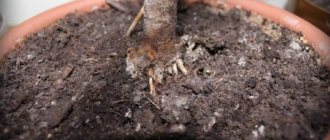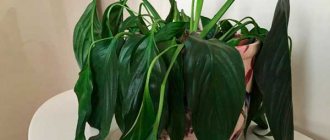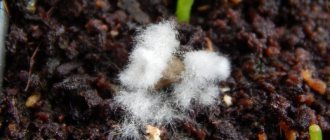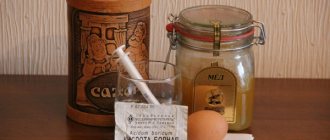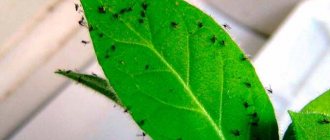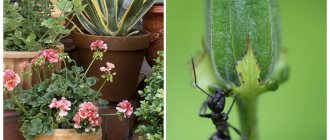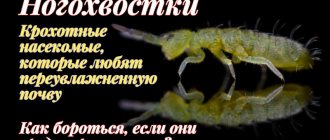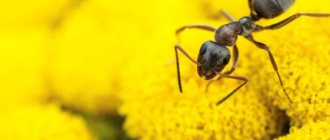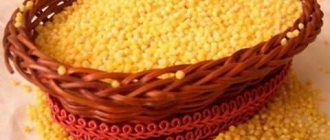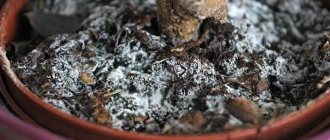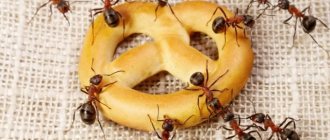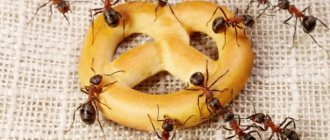11/22/201602/18/2017 Maria Ivanova 0 comments
There are different ways to get rid of ants that have taken a fancy to flower pots in an apartment or house.
You can use store-bought and homemade baits at home, make a soap solution and drown insects in it, buy special products, or use folk remedies that many people have at home.
It’s very disappointing when you tried to grow flowers on the windowsill, and ants appeared in them.
This may indicate that aphids live on the flower, which secretes a sticky substance that attracts predatory insects, or that there are worms in the soil that insects feed on.
First of all, you need to get rid of pests that parasitize indoor flowers at home. If it is an aphid, then you need to buy a special product, dilute it with water and spray the plant with a spray bottle.
Are there worms in the soil? Change the soil by transplanting the plant into a larger pot.
About the causes
Ants on flowers
Factors contributing to the appearance of ant outbreaks in flower pots are:
- neglect of regular cleaning: an overfilled garbage bin, the presence of food remains on the table surface or on the floor can attract various insects, including ants;
- ant eggs or the pests themselves can be brought into a living space when they come into contact with clothing or shoes;
- insects such as ants prefer to choose warm habitats for themselves, which is the reason for their rush into human housing (if there is no hygiene in an apartment or house, this will be an ideal place for their spread);
- a colony of ants can move into a neighboring apartment if one of the neighbors decides to start removing them.
Note. When ants enter an apartment, they settle in an indoor flower pot, where the conditions for their habitat are most favorable.
Why is this happening
Before looking for ways to remove ants from a flower pot, you need to find the reason for their appearance. Experts have proven the close symbiosis between ants and aphids. The latter prefers to use plant juice as a food source. Indoor flowers in pots are the optimal habitat. It is always warm there, moderately humid and all the plants have enough juice.
Ants themselves are capable of growing entire colonies of aphids, carefully caring for their representatives. For these insects, the sweet honeydew, which is secreted during the life of aphids, becomes the most delicious morsel. As a result, large colonies of both aphids and ants grow in flower pots on the window.
Ants in indoor plants
Also, the reason that ants appeared in flower pots could be the initially contaminated soil. It is often imported by flower growers from the forest.
Important!
Before starting the fight, you should carefully study the behavior of insects and determine their location.
Ignoring the problem threatens the rapid death of your favorite potted plants. After all, after an aphid attack, decorative flowers quickly begin to fade, stop growing and may finally die
Why do ants live in flowers?
Ants appear in indoor flowers for the following reasons:
- irregular cleaning: a full trash can, leftover food on the table and floor - these are the things that attract the attention of pests;
- ants or their eggs can be brought into the house on clothes or shoes from the street;
- due to the fact that these pests are heat-loving insects, with the arrival of cold weather they rush into human housing; the ideal conditions for their stay are in the absence of hygiene;
- insects may come from a neighboring apartment, the owners of which have decided to get rid of pests.
Ants in a flower pot Once in an apartment, ants will definitely take a liking to a flower pot and settle in it. After all, it is in it that favorable conditions are created for pests to live.
Ants in flower pots - how to get rid of them?
A good and environmentally friendly way to control insects is to spread sesame seeds around the plant. If you sprinkle sesame seeds on an anthill, the seeds of the plant become infected with a fungus. This helps to quickly get rid of the “womb” of insects.
However, this method is not entirely suitable for flower pots at home. Therefore, we offer you a simple and accessible method for which you will need:
- Large container or bath.
- Water.
- Plasticine.
- A plant in a pot with insects living there.
To get rid of ants in flower pots, follow these steps:
- Place the infested flower pot in a large container or tub filled with water. The pot itself must be completely filled and immersed in water.
- Leave the pot in the water for 30 minutes. During this time, the ants will either run away or drown.
Important! If the flower pot is too large and you cannot move it, then plug the drain hole with plasticine and water the pot very generously. Just as in the previous case, leave the plant for 30 minutes and then remove the plasticine.
- Remove old soil from the root system.
- Repot the plant using new soil.
Important! Remove soil with ants away from other indoor plants and dispose of it.
- Place the flower pot in its original place and make sure there is nothing nearby that might attract ants.
Important! Peretrum spray can help get rid of ants in a flower pot. The product must be used very carefully. First, dilute the peretrum spray with water (10 parts of the product to 90 parts of water), and then water the plant and leave it for 10 minutes to allow the water to drain.
Emerging difficulties
- Do not forget that an anthill is a huge nest, divided into several parts, which are connected by passages. In each part there are 3-4 females that consistently produce offspring, so when fighting insects, search every corner of your home so that the colony of ants does not revive again, bringing new inconveniences.
- Ants are very tenacious. They easily adapt to changing environmental conditions. Moreover, they are able to adapt to certain types of poisons, which also greatly complicates the process.
How to remove ants from flower pots
How to remove ants from flower pots
There is a list of removal methods if ants appear on flowers and how to fight them:
- The widely used well-known folk method of flooding is carried out by placing a flower pot in a large, deep container, which must be filled with water. If your household equipment does not have a container of a suitable size, the pot is filled to the top with water. After a few minutes, when faced with flooding conditions, the pests will almost stop fussing;
- Work on replacing the soil must be carried out correctly: the pot is turned over and the flower is carefully removed from it. Next, the entire root system is thoroughly cleaned and washed to remove eggs laid by ants;
- The method of applying repellents is to treat the pot and trunk with garlic or vegetable oil.
- The list of herbs that repel ants includes:
- sagebrush;
- mint;
- lavender;
- anise;
- parsley;
- tomato tops;
- basil;
- cinnamon;
- carnation;
- black pepper;
- red pepper.
Herbs for ants
Insects cannot tolerate the smell of the above herbs, which forces them to look for a new habitat.
Helpful advice. If it is impossible to replace the contaminated soil, it must be calcined by placing it in a preheated oven for 20 minutes. The soil can be used for its intended purpose after cooling.
- You can also catch ants by covering a flower pot with tape so that the sticky side faces outward;
- A soap solution for killing ants is prepared from 1 teaspoon of liquid soap dissolved in 0.5 liters of water. The resulting liquid is poured into a spray bottle and used to treat the flower planting by spraying. In addition, it is recommended to pour a little solution into the soil;
- You can exterminate ants by placing a mixture of oatmeal and honey near the container with the flower. Honey is a strong-smelling component that attracts ants, oatmeal is a poisonous substance for these insects, and if they eat it, they will immediately die;
- When ant pockets appear in a flower pot, you can sprinkle the soil with millet. When eating cereal, the ants will die, since due to the swelling of the millet inside the insect, its body is deformed;
Note. The method of killing ants using millet is considered the most suitable for use in gardens.
- A solution of camphor oil for removal is prepared by diluting 10 drops of this essential component in 1 liter of warm water. The resulting liquid is used to water diseased flowers. The treatment should be repeated 3 times.
Fighting insects with various means and baits
Nowadays, in stores that sell flowers, on the market, or via the Internet, you can buy chemicals or buy traps that will help you get rid of uninvited guests - ants - at home.
Permethrin
This is a product that is used to treat the soil at home and outside.
Insects eat it, and their nervous system is affected. Insects die due to paralysis.
Permethrin can be purchased as an aerosol or powder.
Before applying the drug to a flower at home, carefully read the instructions. This product is harmful to humans. Do you want to protect yourself?
Wear gloves, make sure that the drug does not get on the mucous membranes of the mouth or eyes. Warn children that this is poison and should not be handled.
If by chance someone at home or even a pet swallows permethrin, rinse the mouth of the child, dog or cat, etc. with plenty of water. Go to a doctor or veterinarian immediately.
Lures
Using baits at home, you can destroy the entire colony. Most often, the bait contains proteins or sugar, tasty oil.
The insecticide must be poured into the bait. The block must be closed and placed on a windowsill or other place near the flower. Before using poison, read the label on it. This product should be safe for children and pets.
The bait helps remove parasites and contains active substances such as:
- boric acid;
- hydramethylnon;
- avermectin;
- fipronil.
Do you want to completely destroy all insects? Do not purchase baits with permethrin or cyfluthrin for home use. The poison in them is potent. Some worker ants will eat it and quickly die, and the colony will continue to develop.
Cover the soil with diatomite
Diatomite is an insecticide (organic) that has a mineral base.
Its consistency is similar to flour. They need to sprinkle the soil around the flower in the pot.
The worker insects will eat the diatomaceous earth and die within half an hour.
The substance can be wetted, but it will be less effective. After watering the flower, the appearance of dew or rain, the poison can be reused.
People should not inhale diatomaceous earth. You can wear a gauze bandage when working with it.
Diatomite is stored in a bag well packed. So it will not harm you, your household and animals.
Soap
To combat insects in an apartment, you will need 1 tbsp of mint soap. l. and 0.5 liters of water. The solution is poured into a spray bottle and the flower is sprayed with it.
In the bathroom, attach a hose to the faucet and use a water jet to wash off the ants from the leaves and stems. Garden flowers are treated similarly.
Sweet poison
Another effective way to get rid of pests in flower pots is to prepare a treat that can kill annoying ants. Millet and honey are used for this. It is necessary to mix the two ingredients and place them on a plate next to the infected plant. The sweet component of the product will definitely force insects to eat it, and the digestive system of six-legged animals is not able to digest the cereal. As a result, all individuals that have tasted the delicacy will die and the flowers will be able to fully grow and develop.
Water hazards made from old tires
The principle of operation is simple: a moat of water is created around the bush. No pests can cross it. Such a barrier is a reliable protection in cases where peonies are surrounded by ants.
Making a barrier is not difficult. Required:
- knife;
- old tires;
- water.
Procedure.
- Cut the tire lengthwise.
- Place one half on the bush.
- Place the tire on the ground, pit side down.
- Fill with water.
Such a barrier will not only prevent ants, aphids and other pests from appearing on peony flowers, but will also moisten the base of the plant.
Poisonous insect sprays
To save peonies from ants, you can spray the plant and the soil underneath with chemicals.
Yes, they can harm pets, birds and even humans, but if you choose the product wisely, you can avoid poisoning.
Another disadvantage of this method is that the ants will return very quickly. If you treat peonies with various chemicals, the effect will last until the first watering or rain.
Strength of smell
Ants have a fairly developed sense of smell to sense food over long distances. Therefore, if there are ants on flowers, you can use some plants.
On a note!
Ants cannot stand the smell of wormwood, mint, parsley and tomato tops. You can simply place these plants on the windowsills near flower pots, and the pests will quickly leave the occupied area.
Mint (Mentha sp.)
The most effective plants against ants are all types of mint. Especially peppermint (Mentha piperita) produces an extremely unpleasant odor for ants. The main role is played by menthol, which has an intoxicating effect on ants. Peppermint grows best in semi-shaded, moist areas.
It can be grown in pots on terraces and balconies, which will also protect these places from insect invasion. Despite its many benefits, mint does have a drawback. mint planted in a vegetable garden or garden grows very quickly thanks to underground rhizomes and can become an unpleasant weed in a short time.
That's why you need to keep an eye on its growth.
Tansy (Tanacetum vulgare)
The second plant that effectively repels ants from the garden is common tansy. Tansy is a wild plant that can be found in meadows near roads and fields. Previously, it was grown in gardens as an ornamental plant and herb.
Tansy - emits a strong, fragrant odor similar to camphor. From tansy we can also prepare liquid manure, infusions and extracts that will be useful in the garden to combat other pests (for example, aphids).
Just like mint, tansy is a very expansive plant and requires control.
Rosemary (Rosmarinus officinalis)
Plants for ants - rosemary, an indispensable assistant in the fight against insects. Rosemary produces a camphor-like aroma similar to pine, which effectively rids the garden of ants and other insects. Rosemary has many culinary uses.
Planted in a pot on the kitchen window it will discourage ants. It likes sunny and warm places, as well as light and permeable soils. Rosemary does not overwinter in our climate, so it is grown in gardens and vegetable gardens as an annual plant.
However, ant repellent plants grown in pots can overwinter in a room and keep you ant-free for many years.
Marjoram (Origanum majorana)
Marjoram is a very famous spice and herbal plant that will discourage ants from creating nests in its vicinity. Ants hate the smell of marjoram. It needs to be grown in a sunny, wind-protected place, in light and fertile soil.
You can plant it next to flower beds and with vegetables, especially brassica - an ornamental cabbage, for which this neighbor will bring a positive effect. You can also make an extract from marjoram that is used to apply to the trails of wandering ants. To prepare it, you must pour 10 g.
dried marjoram herb with 10 liters of water and let it stand for one day. It should be used immediately after preparation.
Thyme (Thymus vulgaris)
Thyme is a well-known medicinal plant and spice whose smell is not liked by ants. Thyme can reach a height of about 30 cm, has small leaves and small purple or white flowers.
You can plant it along paths, flowerbeds and beds, or plant it in pots that can be moved around. It produces a less intense odor than other ant repellent plants, but it is very effective.
Soil replacement
Replacing soil when infested with ants
This method is suitable if the pest has already lived in the soil being used:
- To get rid of it, you need to remove the flower along with the soil from the pot.
- Free the roots from soil as much as possible.
- Pour boiling water over the contaminated soil from the pot and allow to cool. In this case, all individuals die, including their eggs and larvae.
It is also possible to do it in another way so as not to disturb the plant too much. Place the flower pot in a large container of water so that the liquid completely covers it. Let it sit for a while. If there are ants in the ground, they will definitely try to escape. Since pests cannot swim, they will quickly die.
Important!
After the procedure, be sure to let the soil from the pot dry to avoid rotting of the root system.
Flood
If ants have attacked a flower, then to get rid of them, it is necessary to flood their home. To do this, place the flower pot in a deep, large-diameter container and fill it with water. If this is not possible, you should close the water outlet holes and fill the pot to the top with water. The bustle of insects will become noticeable within a few minutes.
Application of repellents
Treating the pot and stem of an indoor flower with garlic or vegetable oil will help remove ants. You can also place a sprig of wormwood, mint, lavender, anise or parsley in the place where pests accumulate. The smell of these plants is not to the liking of insects, which will force them to go in search of new housing. Tomato tops have similar properties.
The aroma of basil, cinnamon or cloves will repel ants from the flower. Insects are afraid of black and red ground pepper. It is enough to scatter any of these spices near the pot, and the ants will leave the flower forever.
Destruction of ants in flowers
Camphor oil
Camphor oil is another effective remedy against pests in the soil. It is enough to dilute 10 drops of camphor oil in 1 liter of warm water and pour the resulting solution over the infected flowers. To achieve maximum effect, the procedure is repeated 2-3 times.
On a note!
Regular cleaning of the apartment will help protect your indoor flower from pest invasion.
Tape traps
Regular tape will help reduce the number of ants at home. It is enough to paste it over the edges of the flower pot, as well as the flowerpot, with the sticky side facing out, and the insects scurrying here and there will certainly fall for this trick.
Special preparations
If there are ants in your indoor flowers, you can also fight them with targeted insecticides. The stores offer solutions that need to be used to treat the soil in pots. Poison sticks are also available. To use them, it is enough to insert an insecticide into the ground.
Special baits have proven themselves well. This is one of the most popular remedies. You can buy them in the store, or you can prepare them yourself. To do this, simply mix sugar, honey or other sweets with a small amount of boric acid. Roll into balls and place in ant paths.
Thus, the fight against ants in home flowers has positive results from the very beginning. The main thing is to take action as quickly as possible, before the population spreads and affects all domestic vegetation.
LiveInternetLiveInternet
—Categories
- = K U L I N A R I Y = (2466)
- Pancakes and pancakes (56)
- Dishes “KOREAN style” (76)
- Fruit and Berry Dishes (65)
- Baked pork, brisket, ham, pastrami, etc. (61)
- Sandwiches, canapés (47)
- Quick and Tasty LUNCH or DINNER (211)
- Quick and Delicious BREAKFAST (130)
- Dumplings, dumplings, khinkali, manti, etc. (52)
- Side dish (35)
- Stuffed cabbage rolls (14)
- Cooking in a sleeve, foil, etc. (73)
- Cooking in MICROWAVE (45)
- Cooking in a MULTICOOKER (31)
- We prepare for a HOLIDAY, FUCKET, etc. (182)
- Cooking OFF-PRODUCTS (tongue, liver, heart, etc.) (38)
- Cooking with MUSHROOMS (62)
- Dessert: sweets, ice cream, yoghurts, etc. (115)
- For a PICNIC (111)
- in KAZAN at KOSTRA (5)
- Food in pots (34)
- Deep-fry: pasties, belyashi, pies, etc. (80)
- SNACK Rolls and Cakes (80)
- Blanks for future use (SEMI-FINISHED PRODUCTS) (23)
- Goldfish (101)
- Salt the fish (67)
- Casserole (23)
- Greens (10)
- From cheese. (25)
- From stale bread (17)
- From Eggs: dishes, omelettes, brizoli, etc. (37)
- We smoke products (27)
- Cereals. Porridge (16)
- Pockmarked hen (181)
- in LAVASH (60)
- Menu for the week (9)
- Seafood (12)
- Meat and minced meat (258)
- Drinks (67)
- Vegetables (137)
- Recipe from Stalik Khankishiev (17)
- Salads and snacks (345)
- Salo (39)
- YOUR OWN meatloaves, sausages, sausages, etc. (29)
- DIY (butter, cheese, etc.) (63)
- TIPS for cooking (99)
- Sauces, Marinades, Dressings, Gravy (50)
- Spaghetti, Pasta, Noodles (7)
- Soups, lagman, beshbarmak, etc. (38)
- We create from cottage cheese (112)
- Decorating dishes, carving (64)
- STUFFED vegetables, vegetable pancakes, pies, zrazy (66)
- Jellied meat, Jellied (7)
- Food storage (35)
- = BAKER A = (362)
- DOUGH (114)
- Puff pastry (44)
- The Beauty of BAKING (18)
- Bread, Flatbread, Donuts (16)
- Pies (76)
- Pies (66)
- Pizza (34)
- Samsa (5)
- And something else. (87)
- Baking TIPS (35)
- = S L A D E N K O E = (2011)
- DOUGH (89)
- The Beauty of BAKING (65)
- TIPS and IDEAS for baking (132)
- Puff pastry (74)
- From SHORT Dough (39)
- CREAM for decorating baked goods (37)
- glaze and fondant (25)
- MASTIC: cooking secrets (10)
- CAKES, sweet PIES (483)
- Cake on a FRYING PAN (35)
- Charlottes / Pies with fruits and berries (173)
- Cheesecakes, Flans, Tarts (71)
- Puff pastries, Croissants, Rolls, Buns (173)
- Cupcakes, Easter cakes, muffins, cupcakes (126)
- Manniki, Cottage cheese, Sour cream (43)
- Cakes, Gingerbread, Eclairs (115)
- Cookies, Gingerbread, Meringue, Shortcakes (233)
- Nuts, Donuts, Donuts, Bagels (54)
- Rolls (83)
- Sochni (6)
- Cheesecakes (13)
- Brushwood, baursaks, chak-chak (15)
- NO BAKE (274)
- Dessert (candies, bars, etc.) (127)
- Waffles (3)
- Collection of recipes (33)
- Confectionery equipment (10)
- = Z A G O T O V K I for Z I M U = (254)
- Important! (17)
- Freeze (27)
- Adjika, ketchup, sauces (20)
- Cucumbers, tomatoes, cabbage (58)
- Zucchini, eggplant, peppers, etc. (thirty)
- From fruits and berries (90)
- Salad for the winter (5)
- Greens (3)
- Mushrooms for the winter (24)
- = K U X N I = (210)
- TABLEWARE (use and care) (54)
- Putting the KITCHEN IN ORDER (64)
- OWN: liquid soap, sprays, etc. (22)
- Fridge. Microwave oven (care, unusual uses) (15)
- Kitchen FURNITURE (34)
- Useful in the KITCHEN (41)
- = U Y T in D O M E = (982)
- Bathhouse (23)
- We knit (socks, mittens and something else. ) (25)
- Hassle-free ironing (18)
- Decoupage and decor (298)
- We make furniture beautiful (covers, capes, etc.) (16)
- For the soul: decorating the house (and garden) with crafts (92)
- Let's tie a scarf and tie (26)
- Interior (108)
- Rugs (16)
- Something about FOOTWEAR (31)
- Beauty for walls (wallpaper, stencils, etc.) (50)
- OWN sprays, liquid soap, bleaches, etc. (39)
- Serving and etiquette (8)
- Cleaning WITHOUT chemicals (66)
- Smart cleaning (79)
- Chemical cleaning at home (90)
- Clean washing in a clean washing machine (104)
- = USEFUL - BAD TIPS = (163)
- Home Economics (77)
- Under the LAW (Family Matters) (48)
- Miscellaneous (42)
- Useful on the go (3)
- = CUT and SEW = (614)
- Building a PATTERN (34)
- TIPS for seamstresses (88)
- Blouses, tunics, cardigans, etc. (89)
- Dresses, robes, etc. (73)
- Pants, skirts (50)
- Lingerie and Swimwear (22)
- And something else. (6)
- Minor clothing repairs (19)
- Repurpose old things (75)
- Bed linen (25)
- Curtains (tailoring, collections) (112)
- Bags and wallets (41)
- Tips for LADIES (100)
- From fabric scraps (27)
- = HOMEHOUSE = (1519)
- Gardener's CALENDAR (59)
- SEEDLING: soil mixtures, sowing and care (173)
- Review and characteristics of vegetable seeds and fruits (69)
- Fertilizers, Fertilizers, Growth stimulants (252)
- Tools, garden accessories (50)
- Greenhouses, greenhouses, beds (137)
- Watering (69)
- Useful tips for the garden (44)
- Tips from Igor Lyadov (6)
- Weeds, Pests, Plant Diseases (194)
- Tomatoes (340)
- Cucumbers (212)
- Onion and Garlic (140)
- Berry (131)
- Berry bushes (92)
- Orchard (92)
- Greens (10)
- Legumes and Other Vegetables (11)
- Bakhcha (38)
- Cabbage (25)
- Potatoes and Root Vegetables (73)
- Compost (17)
- Lawn (4)
- Mushrooms (5)
- Vegetable harvesting (1)
- Storing vegetables and fruits (22)
- = COLORS = (774)
- Sowing flowers for seedlings. Soil mixtures (104)
- Annuals (45)
- Biennial garden flowers (12)
- Perennials (sowing, care, propagation, advice) (77)
- Bulbous perennials (51)
- Lilies (22)
- Peonies (24)
- Phlox (10)
- Roses (118)
- Lianas (Clemates, Kobeya, etc.) (42)
- Ampelous flowers (106)
- Petunias (123)
- Eustoma (9)
- Fuchsia (23)
- Pelargonium (Geranium) (26)
- Shrubs in the garden (4)
- General tips for flower growers (56)
- Watering and fertilizing flowers (85)
- Flowerpots, pots. (36)
- Flower beds, flower beds, rock gardens (64)
- = M A S T E R A M = (482)
- We do it ourselves for home and garden (182)
- We make furniture (89)
- Remodeling and decorating old furniture (35)
- We will build a grill, barbecue, barbecue ourselves (36)
- About tiles and concrete blocks (23)
- We'll do the repairs ourselves (80)
- We repair equipment (7)
- Plumber (9)
- COLLECTION OF TIPS (20)
- Builder (54)
- Electrician (13)
- Fisherman (3)
- = HEALTH = (652)
- Sore feet . (47)
- Instead of tablets (healing properties of honey and plants) (97)
- Headache, Stroke, Heart Attack (3)
- Stomach and. etc. (12)
- Getting rid of BAD habits (32)
- Beauty is a terrible force (107)
- Did you call an ENT specialist?! (Ear, nose, throat) (34)
- We increase IMMUNITY (and cleanse the body a little). (48)
- Spine, neck and joints (126)
- Liver, Kidneys, Urinary. (26)
- Cold ? Yes . but it's NOT a TROUBLE! (56)
- DOCTOR'S advice (9)
- MISCELLANEOUS (People's Councils) (142)
- Tablets and ointments (57)
- = TIPS FOR PARENTS = (158)
- General Tips (90)
- For Schoolboy (72)
- = D E T Y M = (145)
- Games (85)
- Cartoons and films (64)
- = I N T E R E S N O = (1280)
- Rus, Russia, Russian language (11)
- Online (cinema and more) (140)
- WOW (WoW). (9)
- Age-old wisdom (25)
- Vesyolenkoe (349)
- Date of birth, names, horoscopes (70)
- For SMS and congratulations (48)
- BEAUTY (267)
- Music, songs (97)
- A little bit about everything (127)
- SUPER - dancing (60)
- Believe it or not, believe it or not. (86)
- = For D N E V N I K A = (111)
- "with Codes" (4)
- Anime and Decorations (7)
- Tips (24)
- Schemes (72)
- = ELECTRONIC LIBRARY = (7)
Kitchen products
To get rid of ants, you can use products that you probably find in your kitchen.
This could be coffee grounds, pepper and other products, or a homemade trap with self-adhesive film.
Coffee grounds
For some reason, ants really don't like coffee grounds. They will avoid her. To get rid of them, sprinkle it on the soil in the pot and around the pot. Soon the insects will leave.
Spices and products that are on hand
Some mothers worry whether various toxic insect repellents will harm their children? They are safe, just follow the precautions.
Despite this, some housewives prefer natural repellers in the apartment. These include:
- baking soda;
- cinnamon;
- carnation;
- mint;
- basil;
- chili pepper or black powder.
One or more of these products needs to be drawn in a circle around the flower pot. Seal the windows. Gradually, the insects will leave the flower, and new ones will not get into it.
Millet
If ants have settled in flower pots, then simply sprinkle millet on the ground. The cereal will clog the ant passages, which will force the insects to leave their nest. There is another opinion on the use of this recipe. Ants, eating cereals, die due to the fact that the millet begins to swell inside them, deforming the body of the pests.
This method is more often used to control pests in the garden, but it is also quite acceptable for indoor plants.
Oatmeal with honey
The fight against ants in home flowers can be carried out using oatmeal and honey. They are mixed in a 1:2 ratio, the resulting mass is laid out near the flower pot. Ants have a big sweet tooth, so the smell of honey will quickly attract their attention. But oatmeal acts as a poisonous component, and insects will die if they eat it.
Video material
The most effective method of dealing with uninvited guests in the house is prevention. Follow our advice and be careful with flower boxes, especially outside the window. Don't let insects enter your home so you don't have to fight them.
The most effective method of controlling ants in the house is prevention. Well-sealed windows, cleanliness and proper storage of food. And also be careful with flower boxes outside the window.
Unpackaged food or leftovers are a haven for ants. They sense it from afar because they have an unsurely developed sense of smell.
They are guided by their outstanding sense of smell.
Ants choose suitable living conditions, which is why they sneak into houses. Usually they enter human habitation from a nest in a garden or vegetable garden during their travels for food. When they discover that it is not only warm outside your window (usually in early spring), but also enough food, they will move their entire nest to you without any problem.
Basically, when traveling on a wall or window sill, you will first discover that you have a convenient flower pot outside your window. This is an excellent home and it’s a matter of minutes for ants to move there.
Then, with their excellent sense of smell, they will determine that you have something good to eat. And then there is no reason to leave such a good place to live. And vice versa, if you make their life difficult, they will easily move their nest to another place.
A sufficient bait for ants is ordinary sweet candy.
The most important tip is to seal your windows and don't attract ants inside. Window sealing, of course, in the spring is a small problem, because that’s when we get rid of it and try to ventilate it more.
Thus, as a preventative measure, the only thing left to do is to clean everything that would attract ants into the house for food. Make sure the products are well packaged. Store sugar, flour, honey and other goodies for ants in sealed jars.[5]
Ants have no chance of getting into closed glass jars, while paper bags are easily chewed through. It is better to keep juices and sweet drinks in closed plastic bottles. However, the ant will also feed well on crumbs left on the table or scattered sugar.
Try "folk advice".
They are believed to be uncomfortable with cinnamon, basil, mint, and cookie powder. If you really don’t know what to do, try drawing a line on the ground with white chalk; the ants supposedly won’t be able to cross it.
If you sprinkle black or red hot pepper and table salt on the ant paths, they should not appear on you. You can sprinkle baking soda on the window sills near doors and windows; it also helps.
It is believed that ants cannot stand the smell of cloves (spices). If you place several clove heads in a room, then when the ants smell it, they will not return.
Toothpaste spread on ant paths gave good results. It is recommended to wipe the entire apartment with water to which a little vinegar has been added.
Tried and tested home remedies can be used as effective prevention. Since ants have a keen sense of smell, these products really help. Therefore, if you do not want or cannot seal the windows, sprinkle the window sill with something that the ants do not like, and they will leave. If they climb into your flower pots, you can water them thoroughly for a while; they don’t like always wet soil.
Chemistry last.
If tried and tested home remedies don't help, there are several chemical remedies that will kill the ant. There are gels, powders and other products on sale that are poured onto ant paths and into the corner of the room. The ants eat it and die. There are also ant traps that look like a small house. Their advantage is that they do not poison domestic animals along with the ants.
Experts in pest control.
Ants appear in several stages. In the fall, pharaohs - red or yellowish ants - come to apartments and houses to bask; in the spring, small black ants appear. They gather in groups near windows or doors, under window sills and gradually try to move into the house. They appear near heating appliances, risers and window sills; they can also get in through the hood.
Companies involved in disinfection are well aware that in the summer it is not so easy to get rid of ants crawling from the street. Two barriers should be made - mechanical and chemical. The mechanical one prevents ants from entering the house, and the chemical one destroys them inside. Plaster splashes, windows, doors, window sills and cracks in the plaster.
Radical freezing will free you.
DIY non-poisonous trap
You can make your own insect trap. It will be non-toxic from a self-adhesive film. Do it like this:
- cut out a self-adhesive ring of such a size that it tightly covers the flower pot;
- Remove the protective layer from the tape and place it with the sticky side facing out so that insects crawling past are caught in the trap. The pot will stand in the center of such a tape;
- The adhesive film should be changed when necessary.
Do you want ants to leave your home forever after treatment? Clean the kitchen thoroughly after meals, do not leave sweet jam, honey, fruit and other foods that attract insects.
Cover juices and compotes in jars with a nylon lid. Take out the trash regularly.
Disinfect and keep the apartment clean. New insects will not take root; using various means you can get rid of the old-timers.
Preventive measures against the appearance of ants
To prevent ants from appearing in your home again, take preventive measures:
- Pay close attention to the cleanliness of your kitchen. Do not leave dirty dishes and thoroughly wipe all work surfaces from food residues.
- Do not leave the following products open: sweets, meat, bread and other products.
- Store fruit in tightly closed food containers or the refrigerator.
- Frequently remove trash that may serve as a beacon for ant colonies in your kitchen.
- If you have determined the paths where the ants appear, then stick a 5 cm wide adhesive path using double-sided tape. This will deter the onslaught of uninvited guests.
- Keep juices and sweet drinks in closed plastic bottles.
- Sprinkle soda, black or red hot pepper near the doors, as well as on the window sills. This will repel insects.
- Ants also cannot tolerate the smell of cinnamon, basil, mint and cloves (spices). If you place repellent folk remedies around the room or on the windowsill, the ants will smell them and will not return to your house.
- Seal your windows and sprinkle your window sill with deterrents to prevent them from sneaking in through your window.
